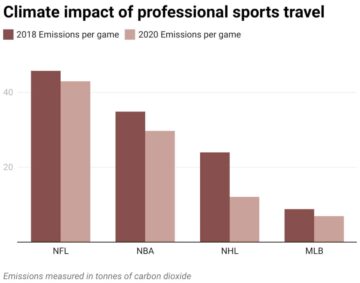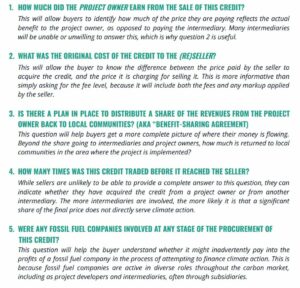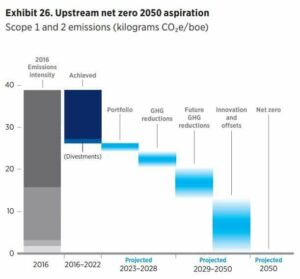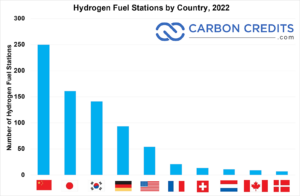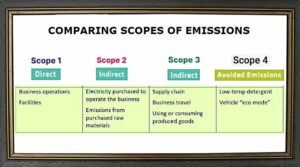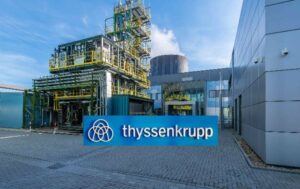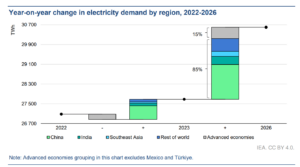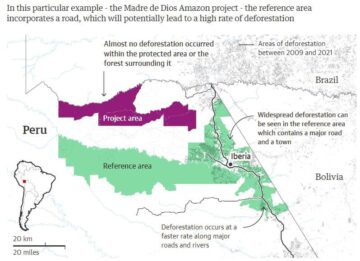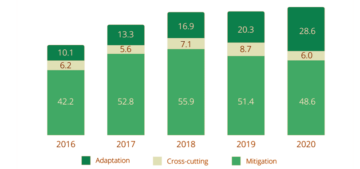Deep Sky, a Canadian carbon removal project developer, partnered with carbon capture solutions provider Svante Technologies to study carbon sequestration in Quebec. They tapped Sproule to assess the feasibility of permanent geologic CO2 storage in the province.
This partnership is Deep Sky’s first venture to evaluate carbon capture and storage (CCS) technologies to ramp up the roll-out of this technological climate solution. This carbon dioxide removal (CDR) technology is crucial in achieving the global net zero emissions goal.
CCS can help balance hard-to-abate carbon emissions and help reverse the buildup of carbon pollution that’s already in the air.
The Need for Deep Understanding of CCS
The evolution of CCS technologies is growing rapidly, driven by the urgent need to tackle climate change. With environmental challenges heightening, there’s a growing corporate demand for high-quality carbon removal credits. Thus, developing reliable CCS technologies is critical to meet such demand.
Many of the technologies required to capture carbon from air or water and store it permanently do exist. But they’re mostly in the early stages and to scale them, it’s important to completely understand them, particularly their costs and impacts.
This understanding exacted through a team of expert researchers, scientists, and entrepreneurs allows Deep Sky to scale on a level that has never been seen before. It will enable the carbon removal company to develop CCS technologies and bring them to commercialization through collaborations.
The company’s co-founder, Fred Lalonde, highlighted the importance of working with other major industry players to deliver rapid meaningful changes. Commenting on their partnership with Svante, he said that:
“By combining Deep Sky’s project development expertise with Svante’s ready-to-deploy technology and Sproule’s geology research, we can drive down greenhouse gas emissions and deliver carbon credits to the market at hyper speed.”
Svante has developed innovative carbon removal technology using solid sorbent-coated filters that capture CO2 from industrial sources. These filters can capture up to 95% of the industrial carbon emissions using direct low-pressure steam injection.
The filters are available for point-source capture from hydrogen, cement, steel, aluminum, pulp & paper plants, and refineries, and DAC applications. DAC refers to direct air capture.
Svante’s Point-Source Carbon Capture Technology
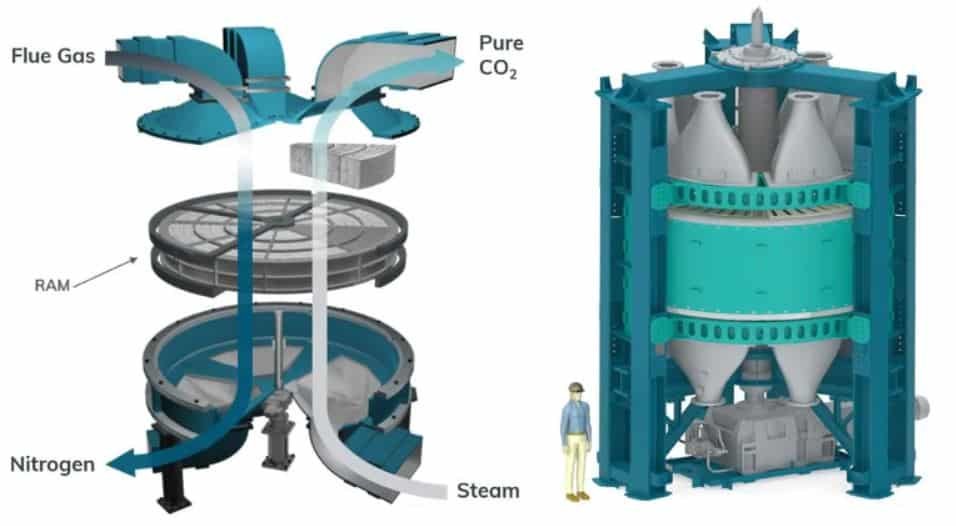
 Leveraging Deep Sky’s CDR development expertise and Quebec’s unique geology, Svante’s CEO and President Claude Letourneau remarked that:
Leveraging Deep Sky’s CDR development expertise and Quebec’s unique geology, Svante’s CEO and President Claude Letourneau remarked that:
“For DAC to succeed, it will be critical to find geographical locations that have substantial and safe storage potential…We can leverage the region’s [Quebec] vast renewables and hydroelectric energy needed to safely trap and store CO2 in deep underground saline aquifers.’’
Engineered or tech-based carbon removal using DAC and other carbon capture and sequestration methods is maturing. But the problem is that no one is able to scale these technologies to gigaton levels, yet.
The Deep Sky Solution: Tech-Based, Gigaton-Scale CDR
Deep Sky aims to build gigaton-scale carbon removal and storage infrastructure in Québec and across Canada. As a project developer, the startup is bringing together the most promising CDR technologies to commercialize climate solutions at scale.
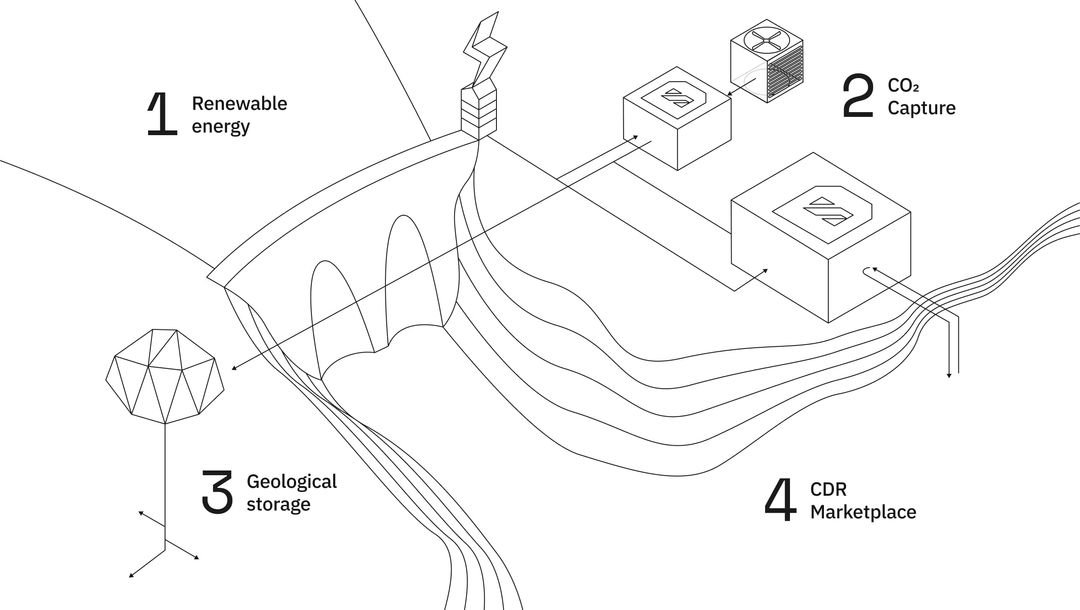

The CDR company is supported by the government of Québec, a large Ontario pension fund, and renowned private investors. Headquartered in Québec, the early-stage VC company is in an advantageous position to leverage the region’s CCS potential.
Though nature-based CDR approaches are cheaper and are easier to deploy in the short term, tech-based carbon sequestration technologies offer a much greater removal potential and greater scalability. The former is facing land availability constraints.
Forests, for example, can remove about 5 tons of CO2/hectare of land. In contrast, a DAC plant can capture up to 50,000 tCO2 for the same land area. So, in comparison, the tech-based CDR method is about 10,000x more land-efficient than its nature-based CDR counterpart.
There won’t be enough land available to naturally sequester the amount of carbon needed to reach net zero emissions. But engineered CDR technologies also have their own challenges – energy use.
Carbon capture technologies need thousands of kilowatt-hours of energy to capture a ton of CO2. To address this, carbon removal companies like Deep Sky must work with existing energy-efficient carbon capture technologies scalable at gigaton-level. Svante matches this requirement.
Delivering High-Quality Carbon Removal Credits
Technological carbon sequestration methods are known to produce high-quality and reliable carbon removal credits. That’s because they provide durable, scalable, measurable, and verifiable carbon emission reductions.
As the demand for CDR skyrockets, companies, governments, and individuals will seek Deep Sky’s high-quality carbon removal credits. This enables the carbon removal startup to be a key player in the CDR market.
Deep Sky believes that the demand for premium CDR credits will grow exponentially, providing one of the biggest market opportunities.
To leverage this market growth, the company is currently raising a $50M Series A round co-led by WhiteCap Venture Partners and Brightspark. The funding will enable Deep Sky to build its initial pilot facility, Deep Sky Alpha, and to set the ground for its first large-scale facility, Deep Sky One.
The recent developments and announced investments in CDR seem to point to Deep Sky’s bright market projection. CDR credit purchases jumped 437% for the first half of this year versus the full-year 2022. And as corporate net zero commitments continue to grow, so does the demand for these environmental credits.
As Quebec is strategically positioned for the next gigaton-scale carbon removal projects for its ideal geological makeup for carbon storage, renewable resources, and supportive policy, Deep Sky has a unique advantage in delivering high-quality CDR credits. Teaming up with Svante Technologies, their strategic collaboration for an innovative carbon removal project paves the way for a gigaton-scale climate solution.
- SEO Powered Content & PR Distribution. Get Amplified Today.
- PlatoData.Network Vertical Generative Ai. Empower Yourself. Access Here.
- PlatoAiStream. Web3 Intelligence. Knowledge Amplified. Access Here.
- PlatoESG. Automotive / EVs, Carbon, CleanTech, Energy, Environment, Solar, Waste Management. Access Here.
- PlatoHealth. Biotech and Clinical Trials Intelligence. Access Here.
- ChartPrime. Elevate your Trading Game with ChartPrime. Access Here.
- BlockOffsets. Modernizing Environmental Offset Ownership. Access Here.
- Source: https://carboncredits.com/deep-sky-partners-with-svante-for-quebec-carbon-removal-and-sequestration/
- :has
- :is
- $UP
- 000
- 2022
- 610
- 95%
- a
- Able
- About
- achieving
- across
- address
- ADvantage
- advantageous
- aims
- AIR
- allows
- Alpha
- already
- also
- amount
- an
- and
- announced
- applications
- approaches
- ARE
- AREA
- AS
- assess
- At
- availability
- available
- Balance
- BE
- because
- been
- before
- believes
- Biggest
- Bright
- bring
- Bringing
- build
- but
- by
- CAN
- Canada
- Canadian
- capture
- carbon
- carbon capture
- carbon credits
- carbon dioxide
- carbon emissions
- Carbon Sequestration
- ceo
- challenges
- change
- Changes
- cheaper
- Climate
- Climate change
- Co-founder
- co2
- collaboration
- collaborations
- combining
- Commenting
- commercialization
- commercialize
- commitments
- Companies
- company
- Company’s
- comparison
- completely
- constraints
- continue
- contrast
- Corporate
- Costs
- Counterpart
- credit
- Credits
- critical
- crucial
- Currently
- data
- deep
- deliver
- delivering
- Demand
- deploy
- develop
- developed
- Developer
- developing
- Development
- developments
- direct
- do
- does
- down
- drive
- driven
- Early
- early stage
- easier
- emission
- Emissions
- enable
- enables
- energy
- energy use
- enough
- entrepreneurs
- environmental
- Ether (ETH)
- evaluate
- evolution
- example
- exist
- existing
- expert
- expertise
- exponentially
- Facility
- facing
- filters
- Find
- First
- For
- Former
- from
- fund
- funding
- GAS
- geographical
- Global
- goal
- Government
- Governments
- greater
- greenhouse gas
- Greenhouse gas emissions
- Ground
- Grow
- Growing
- Growth
- Half
- Have
- he
- headquartered
- help
- high-quality
- Highlighted
- http
- HTTPS
- hydrogen
- ideal
- Impacts
- importance
- important
- in
- individuals
- industrial
- industry
- Infrastructure
- initial
- innovative
- Investments
- Investors
- IT
- ITS
- jpg
- Key
- key player
- known
- Land
- large
- large-scale
- Level
- levels
- Leverage
- like
- locations
- machine
- major
- makeup
- Market
- market opportunities
- max-width
- meaningful
- Meet
- method
- methods
- more
- most
- mostly
- much
- must
- Need
- needed
- net
- never
- next
- no
- of
- offer
- on
- ONE
- Ontario
- opportunities
- or
- Other
- own
- Paper
- particularly
- partner
- partnered
- partners
- Partnership
- pension
- pension fund
- permanent
- permanently
- pilot
- plants
- plato
- Plato Data Intelligence
- PlatoData
- player
- players
- Point
- policy
- Pollution
- position
- positioned
- potential
- Premium
- president
- private
- Problem
- produce
- project
- Projection
- projects
- promising
- provide
- provider
- providing
- purchases
- Quebec
- raising
- Ramp
- rapid
- rapidly
- reach
- recent
- reductions
- refers
- reliable
- remarked
- removal
- remove
- Renewable
- Renewables
- Renowned
- required
- requirement
- research
- researchers
- Resources
- reverse
- round
- safe
- safely
- Said
- same
- Scalability
- scalable
- Scale
- scientists
- Seek
- seem
- seen
- sequestration
- Series
- Series A
- series a round
- set
- Short
- sky
- Skyrockets
- So
- solid
- solution
- Solutions
- Sources
- speed
- stages
- startup
- Steam
- steel
- storage
- store
- Strategic
- Strategically
- Study
- substantial
- succeed
- such
- Supported
- supportive
- tackle
- Tapped
- team
- technological
- Technologies
- Technology
- term
- than
- that
- The
- their
- Them
- These
- they
- this
- this year
- thousands
- Through
- Thus
- to
- together
- Ton
- tons
- understand
- understanding
- unique
- urgent
- use
- using
- Vast
- VC
- venture
- verifiable
- Versus
- W3
- Water
- Way..
- we
- webp
- will
- with
- Work
- working
- year
- yet
- zephyrnet
- zero

